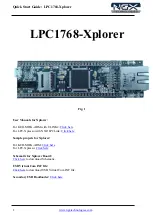
2-6
PDSM4/PDSME User's Manual
2-4 Installing DDR 2 Memory
Memory Module Installation
Exercise extreme care when installing or removing memory modules
to prevent any possible damage.
1. Insert each DDR 2 memory module vertically into its slot. Pay attention to the
notch along the bottom of the module to prevent inserting the module incor-
rectly. (See support information below.)
2. Gently press down on the memory module until it snaps into place.
Support
The PDSM4/PDSME supports Dual channel, ECC unbuffered DDR 2
667/533/400 SDRAM. Both interleaved and non-interleaved memory are
supported, so you may populate any number of DIMM slots. (Populating
DIMM#1A,DIMM#1B, and/or DIMM#2A, DIMM#2B with memory modules
of the same size and of the same type will result in dual channel, two-way
interleaved memory which is faster than the single channel, non-interleaved
memory. When ECC memory is used, it may take 25-40 seconds for the VGA
to display.)
(*Note: 1. Due to chipset limitation, 8GB Memory can only be supported by the
following operating systems:
32-Bit: Windows 2000 Advanced Server, Windows Server 2003 Enterprise
Edition;
64-Bit: Windows Server 2003 Standard x64 Edition, Windows XP Professional
x64 Edition, Windows Server 2003 Enterprise x64 Edition.
2. You may install a maximum of 2GB DIMMs on each slot; however, only DDR 2
533 2GB density modules are available for this confi guration.
3. Some old-version of DDR 2-667 may not match Intel's On-Die-Tempeature re-
quirement and will automatically be down-graded to run @ 533 MHz, If this
occurs, contact your memory vendor to check the ODT value.)
Note:
Due to memory allocation to system devices, the amount of memory that
remains available for operational use will be reduced when 4 GB of RAM
is used. The reduction in memory availability is disproportional. Refer
to the table on the next page. For Microsoft Windows users: Microsoft
implemented a design change in Windows XP with Service Pack 2 (SP2)
and Windows Vista. This change is specifi c to the Physical Address Exten-
sion (PAE) mode behavior which improves driver compatibility. For more
information, please read the following article at Microsoft’s Knowledge
Base website at: http://support.microsoft.com/kb/888137.















































